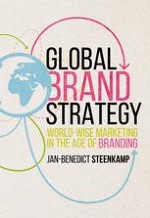2017 | OriginalPaper | Chapter
2. The COMET Framework: How Global Brands Create Value
Author : Jan-Benedict Steenkamp
Published in: Global Brand Strategy
Publisher: Palgrave Macmillan UK
Activate our intelligent search to find suitable subject content or patents.
Select sections of text to find matching patents with Artificial Intelligence. powered by
Select sections of text to find additional relevant content using AI-assisted search. powered by
